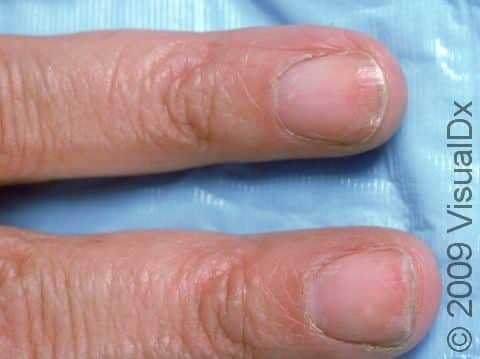Are you experiencing frustrating nail splitting? It’s a common issue, and you might be dealing with a condition known as onychoschizia. Onychoschizia, often referred to as brittle nails or nail peeling, describes horizontal splits within the nail plate, particularly at the free edge. This splitting can occur on its own or alongside onychorrhexis, another nail condition characterized by vertical ridges or splits running lengthwise along the nail. Both onychoschizia and onychorrhexis can contribute to what is generally termed “brittle nails.”
Common Causes of Splitting Nails
One of the most frequent culprits behind splitting nails is the repeated cycle of wetting and drying your hands. This constant moisture fluctuation can weaken the nail structure over time, leading to onychoschizia. However, several other factors can also contribute to this nail problem:
- Nail Cosmetics and Harsh Products: Frequent use of nail polish, nail polish removers (especially those containing harsh solvents), and nail hardeners can damage the nail surface and contribute to splitting. Nail procedures like acrylics or gel manicures, if not applied or removed properly, can also weaken nails.
- Exposure to Chemicals: Certain occupations involve frequent contact with chemicals that can be harsh on nails. These include alkalis, acids, cement, various solvents, thioglycolates (found in some hair perming solutions), and even prolonged exposure to salt or sugar solutions.
- Nail Trauma or Injury: Direct injury to the nail, even minor repeated trauma, can initiate or worsen nail splitting.
- Underlying Medical Conditions: While less common, splitting nails can sometimes be a symptom of underlying health issues. These may include endocrine system disorders (glandular diseases), tuberculosis, Sjögren’s syndrome, and nutritional deficiencies. Certain skin conditions like lichen planus and psoriasis, as well as medications like oral retinoids (derived from vitamin A), can also contribute to brittle and splitting nails.
In onychoschizia, the nail plate essentially peels apart in layers, leading to the visible splits and weakness.
If you are concerned about persistent nail splitting, consulting a dermatologist can help determine the underlying cause and the best course of action for healthier, stronger nails.
